![]()
Bob’s Bulletin – Vol. 4 No. 4
A newsletter for unclassified meteorites found in the USA.
More good news to share with you regarding recent efforts at finding a solution to the problem of Ordinary Chondrite (OC) finds found here in the U.S.A. going unreported, and undocumented, and unclassified. We have found some university graduate students willing to volunteer as classifiers-in-training, and who are very willing to classify OC in order to get the experience and recognition. In addition, several institutions outside of the U.S. have requested the opportunity to have their students get training on their microprobe by characterizing our neglected chondrites.
In the meanwhile, I will continue assigning provisional “UU” numbers for all Unclassified U.S. (UU) Ordinary Chondrite (OC) finds that I can personally authenticate. If you think it would help to have your “U.U.O.C.” depicted in a future Newsletter, just contact me.
But there are certain conditions, which must be met before your "meteorite" find can be included in this Bulletin:
1.) It has to be confirmed that your find is, indeed, an OC meteorite, and in order to confirm this,
2.) either the entire specimen, or minimally, a “30% or 30gram type-specimen” must be donated, along with,
3.) a thin-section (but don't worry, I can help with getting this made),
4.) and finally, all of the “History” related to the recovery of this find.
(And again, I will help in the gathering and the recording of the recovery data that will go into a "writeup" regarding the specimens "history" and "physical description").
This is nothing out of the ordinary, and would also be required if the meteorite were to be submitted for formal approval. So, if this meteorite were to get classified, it would be all ready for submission.
I am continually gratified to see that this problem is getting increasingly noticed, and that this potential loss to science has been recognized and that there are efforts being made to avert it. So, I'm hopeful that this current situation” will improve, and even more hopeful that it will be in the near future. As history has shown, the current situation WILL change, and eventually others will come along who are interested in OC finds from the US, AND in getting them classified, so that they could research and write about those meteorites.
Because of this recent development, and in order to get more meteorites turnded-in for classification, this month’s edition of the “Bulletin” will be kept short.
*** Note: The meteorites depicted in this month’s article were not all found by me. Credit is given to images not taken by me. ***
I hope the reader will enjoy the Photo Gallery.
| Field ID Number | UU090312 |
|---|---|
| Newsletter | 04-4 |
| Location | Arizona, USA |
| Thin-section ID Number | V-RED |
| Dimensions | 12mm x 10mm x 7m |
| Weight | 2.8 grams |
| Type Specimen | 1.4gram endcut - plus thin-section |
| Class | Ordinary Chondrite (quite possibly an L6) |
| mid-range (but very likely below "W3") | |
| low (most likely "S2" or lower) | |
| Macroscopic Description -- R. Verish | |
| This meteorite is a well-rounded, whole individual stone. The dark, grayish-brown exterior of this chondrite is covered 90% with a thick, relict fusion crust. Very little in the way of rust-spots. The interior is a dark-brown, compact matrix with very low metal-grain content, and few troilite grains. The chondrules and inclusions are not distinct, but don't appear to be variable in size. | |
| Thin Section Description -- R. Verish | |
| The section exhibits a variety of chondule sizes (some up to 2 mm), but most are ill-defined in a dark-brown, iron oxide-rich matrix of fine-grained silicates, troilite and Fe-Ni metal-grains. Although the exterior of this meteorite has experienced only minimal physical weathering, the interior has undergone some chemical weathering and is slightly weathered. Very weak mosaic shock effects are present. Silicates are equilibrated. This meteorite is probably a low-shock, equilibrated L-chondrite. | |
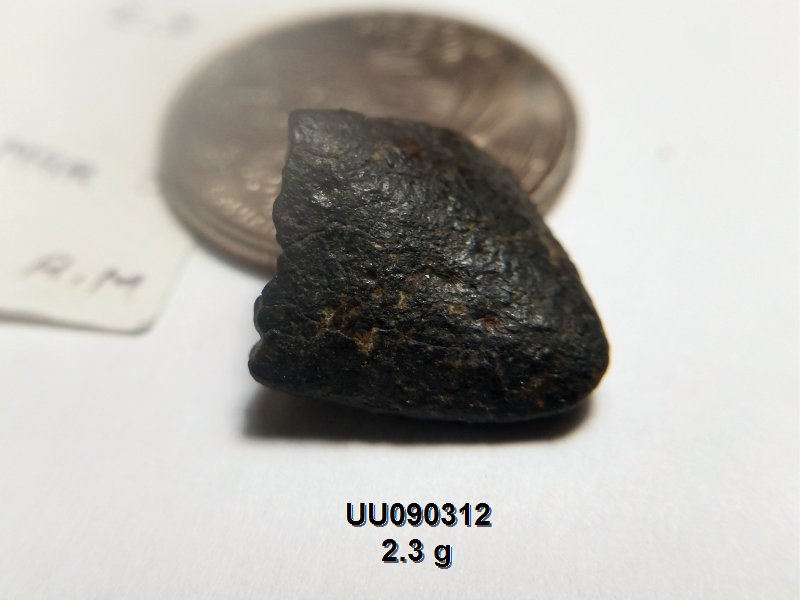
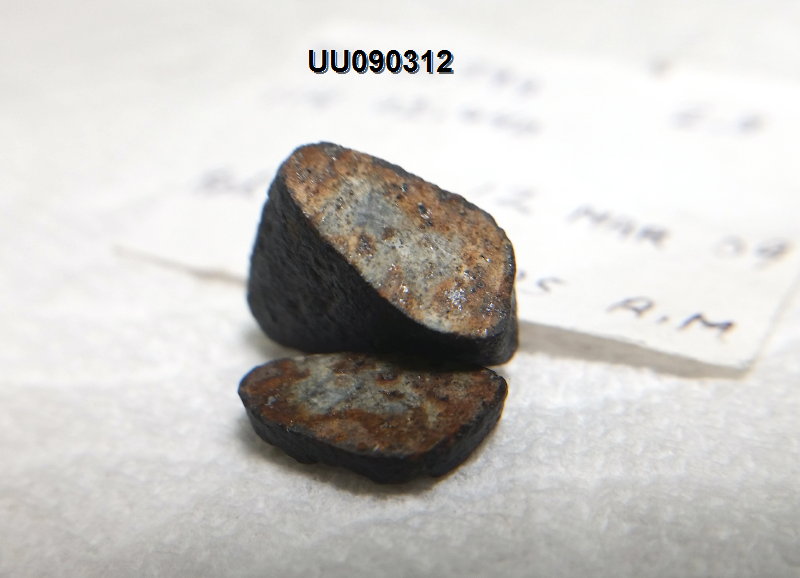

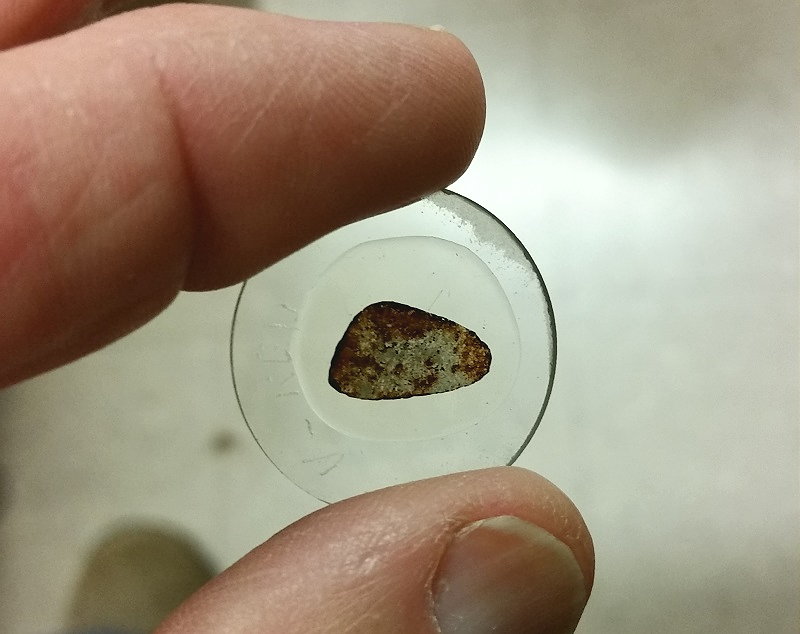

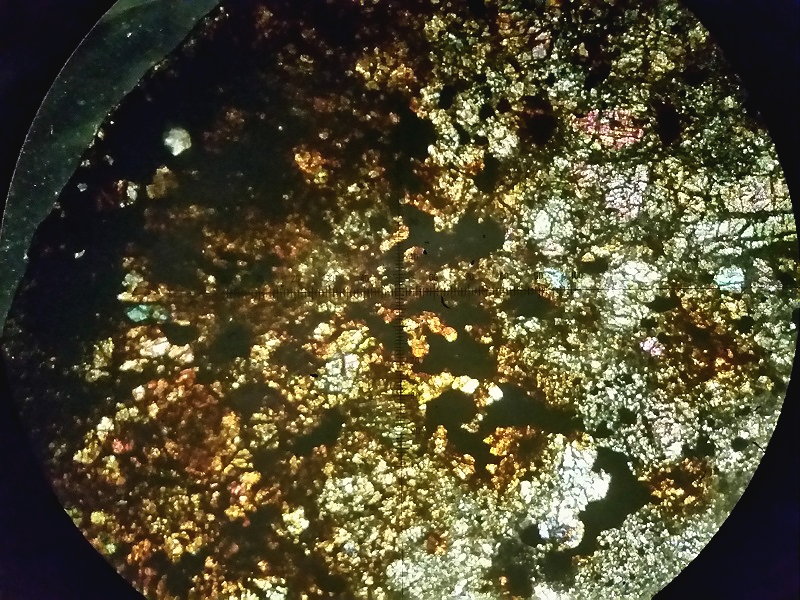

The above example is one way in which I can bring attention to what I predict will be an increasing number of unclassified meteorites found here in the USA. Hopefully, attention will be drawn to what I see as a growing problem, and maybe some institution will offer to help these orphans get classified and cataloged.

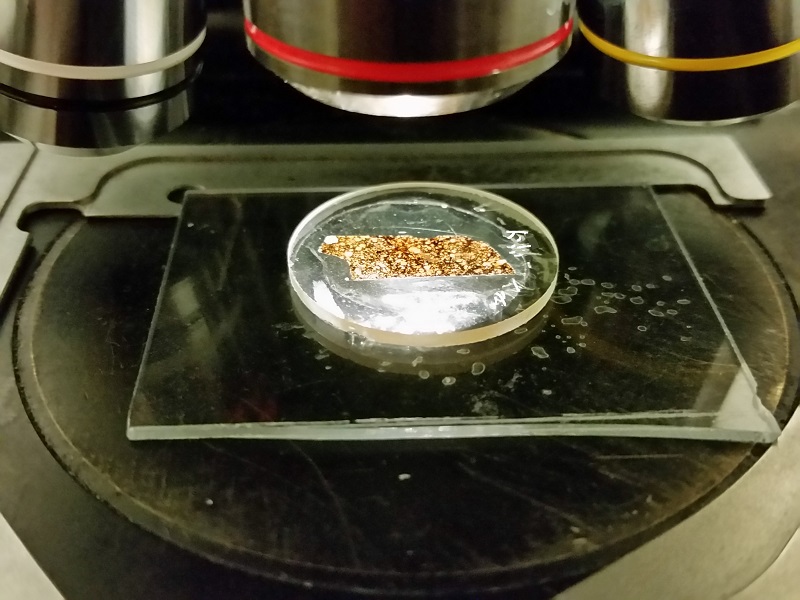
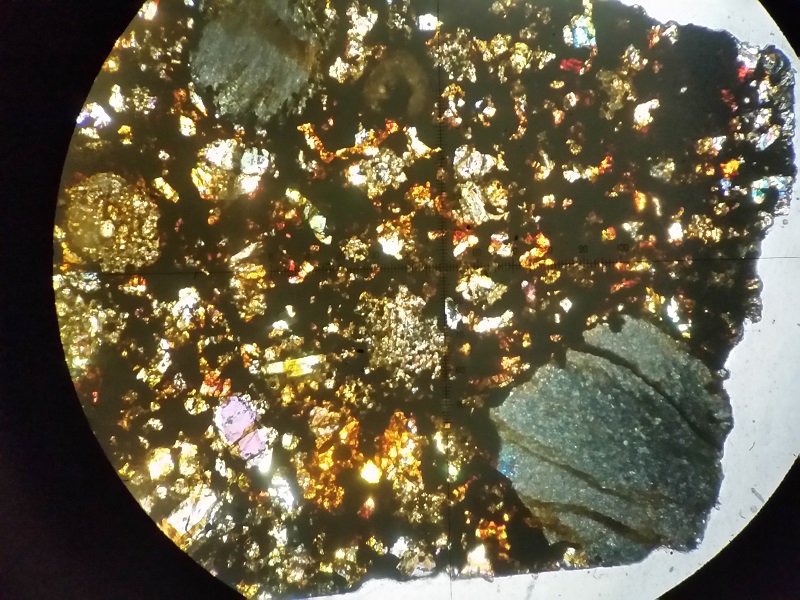
Above are the images of “UU000410" after being cut, and thin-section made.

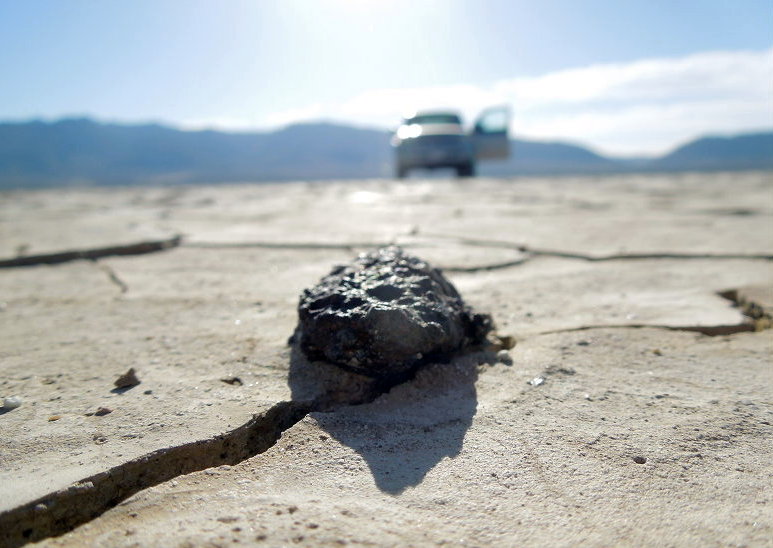
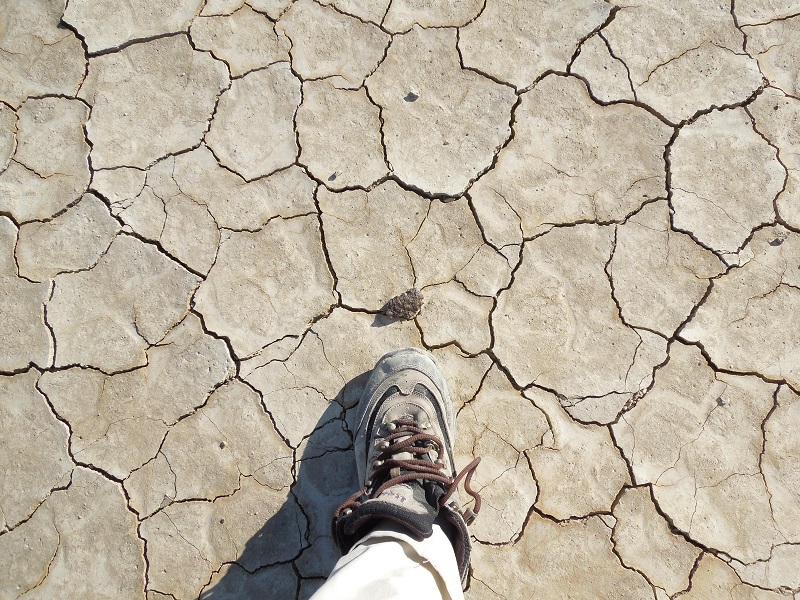

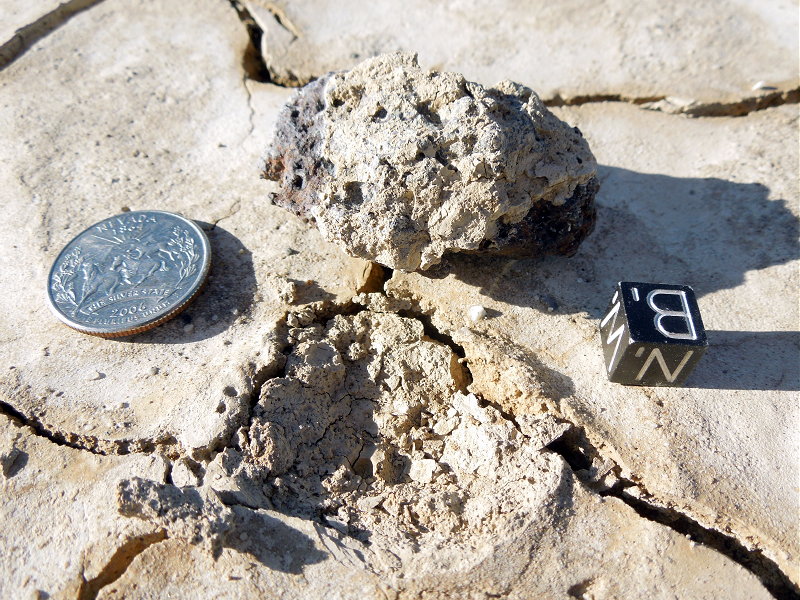
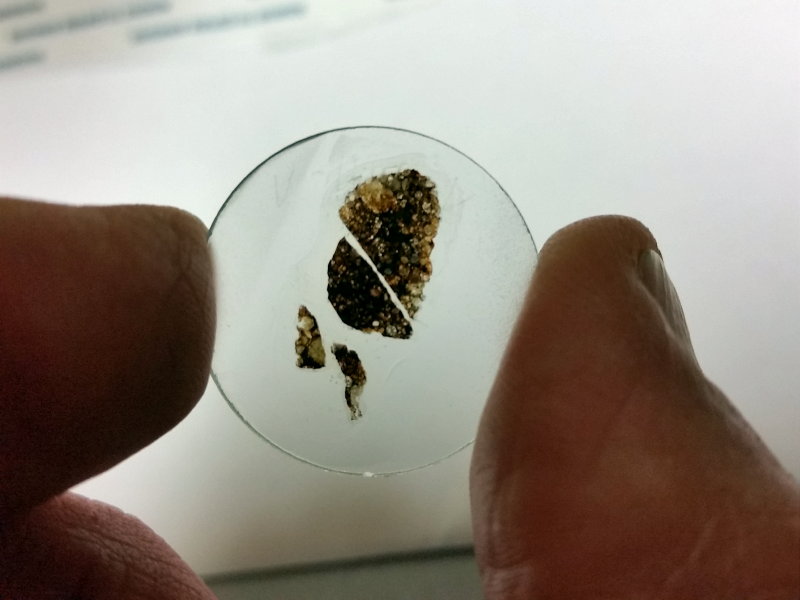

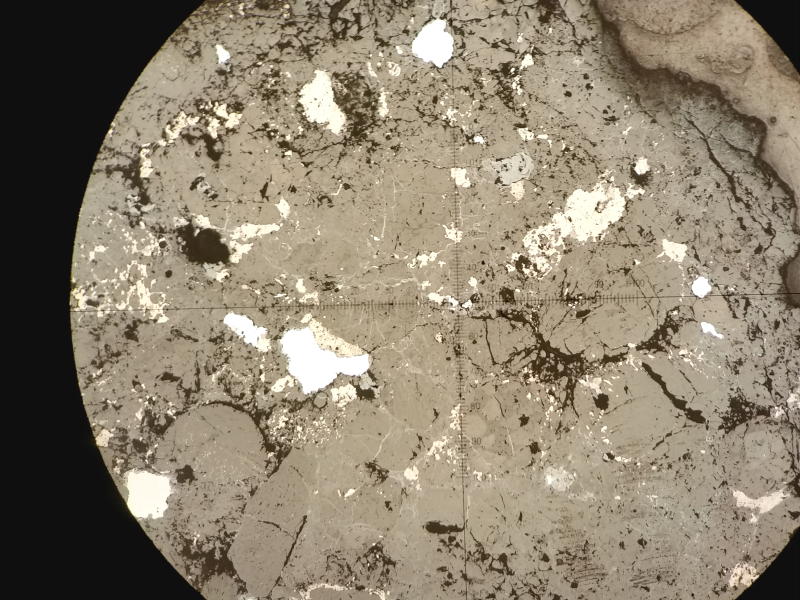
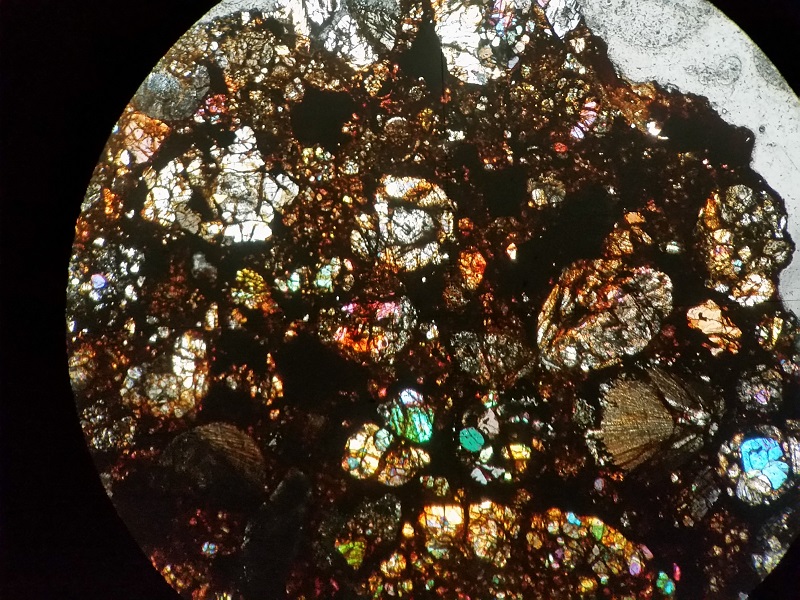
Above are images of specimen “UU140527” after having a sample cut for a thin-section of the type-specimen, showing the equilibrated-chondrite interior.
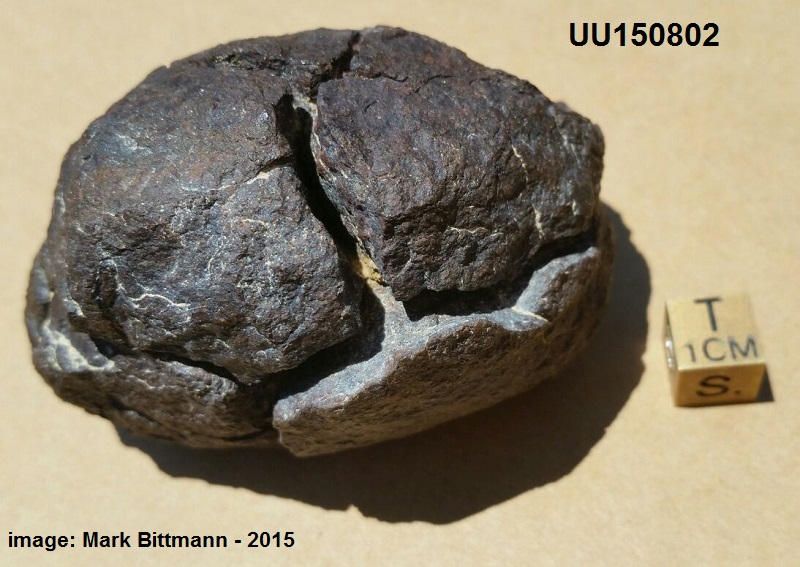

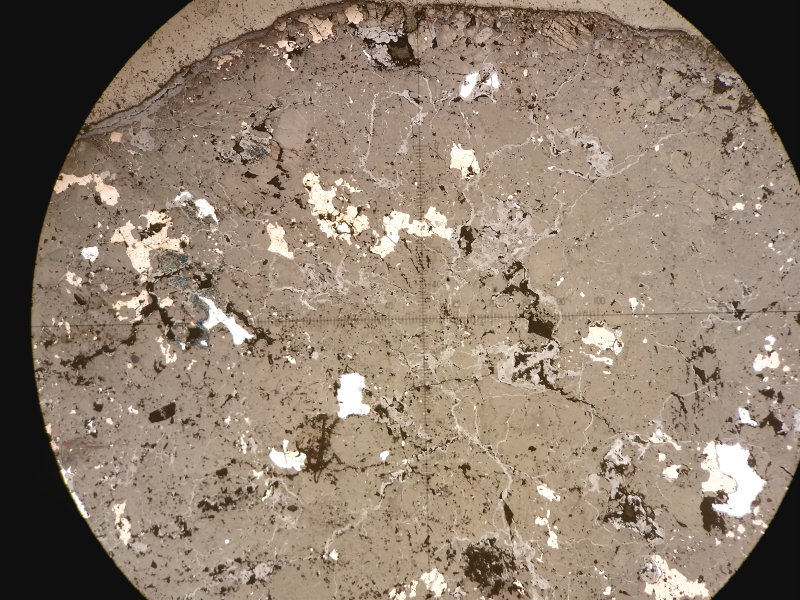
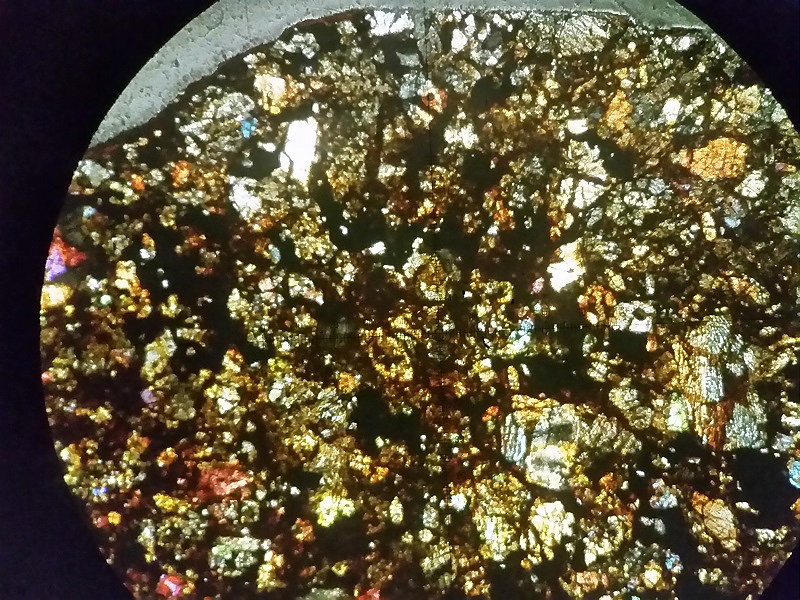

Above are the images of specimen “UU150802” and a thin-section of a sample, showing the highly equilibrated and weathered H-chondrite interior.
Note: All thin-sections are a 1″-round, double-polished, uncovered glass-slide.
The above “Image Gallery” is just one example of a way in which to record U.S. Unclassified Ordinary Chondrite (UUOC) meteorite finds. Hopefully, these Bulletins have brought attention to the problem of the increasing number of O.C. meteorites found here in the USA, which are not only going unclassified, but are not even getting reported. Although this is not a permanent solution, this “stop-gap measure” is better than nothing, and is certainly better than letting this problem perpetuate.
In the meanwhile, I will do my part and start to submit these thin-sections to the new “classifiers-in-training”.
References:
Bob’s Bulletin – Vol. 4 No. 3 — In my 11th Bulletin, I published “Provisional Number” UU180513, which is awaiting classification.
Bob’s Bulletin – Vol. 4 No. 2 — In my 10th Bulletin, I published “Provisional Number” UU180122 , which has since been classified and approved as "Willcox Playa 011".
Bob’s Bulletin – Vol. 4 No. 1 — In my 9th Bulletin, I published a table of six (6) “Provisional (UU) Numbers” (for Unclassified U.S. meteorites) that I assigned to some finds from four (4) separate localities:
*** Note: The above 6 meteorites represent 4 localities. ***
Bob’s Bulletin – Vol. 3 No. 1 — In my 8th Bulletin, I published a table of sixteen (16) “Provisional (UU) Numbers” (for Unclassified U.S. meteorites) that I assigned to some finds from an existing DCA, but were refused entry into the MBD:
*** Note: All of these meteorites were found from a single locality, an officially designated DCA. ***
In all of my previous Bob’s Bulletins, I prefaced each one with an explanation of what I mean by the phrase “orphaned-meteorites from the USA”. I defined “orphaned” as being meteorite “finds” that are recovered in the U.S., but are not being recorded. Contrary to what you may think, these meteorites are being reported, but the finders of these meteorites have encountered resistance in getting provisional numbers assigned to their finds, even when the (obvious) meteorites were recovered from officially designated “Dense Collection Areas” (DCA). These meteorites are being ignored. This is in addition to the current practice by the official classifiers of meteorites to refuse to classify Ordinary Chondrites (OC). Without an “official” classification, meteorites cannot get an officially-approved name by the Nomenclature Committee of the Meteoritical Society, and hence, cannot be cataloged. And hence, uncatalogued meteorites are “orphaned”.
Unfortunately, the vast majority of new U.S. finds are destined to remain orphans.
In my preface I would go on to explain that these “Unclassified U.S. finds” (UU) were being orphaned from the family of “approved” meteorites for the following reasons:
1) The lack of funding for U.S. researchers to authenticate, classify, and document/record these U.S. OC finds has resulted in several new [negative] trends, all which discourage finders from reporting their finds.
2) The increasing trend of commercializing the classification of meteorites by U.S. researchers has priced U.S. OC finds out of the market, and
3) The increasing trend of U.S. researchers to turn away OC finds, even when finders of U.S. OC meteorites are willing to pay for their classification.
Bob’s Bulletin – Vol. 2 No. 3 — In my 7th Bulletin, I published a table of six (6) “Provisional (UU)
Numbers” (for Unclassified U.S. meteorites) that I assigned to some recent finds:
*** Note: All of these meteorites were found by one person (not this author) – all in one day. ***
Bob’s Bulletin – Vol. 2 No. 2 — In my 6th Bulletin, I published a table of the increasing number of unclassified U.S. meteorite finds and petitioned that crowd-sourced funding be used for volunteers to compile and record these finds for later classification and official-approval, until such time that this function can be properly funded with U.S tax-dollars.
Bob’s Bulletin – Vol. 2 No. 1 — In my 5th Bulletin, I published a table of all the unclassified finds from Coyote Dry Lake DCA that were reported prior to 2007.
Bob’s Bulletin – Vol. 1 No. 4 — In my 4th Bulletin, I reported that several U.S. researchers were volunteering their time and effort to record and publish meteorite falls and finds, such as, Creston and Misfits Flat. I suggested that this method of cataloging newly found US meteorite specimens could be expanded, but the main hindrance is that there is no funding for this kind of effort.
Bob’s Bulletin – Vol. 1 No. 3 — In my 3rd Bulletin, I proposed the idea of an on-line database for these “orphaned” and other unclassified U.S. meteorites. This would have to be an all-volunteer effort, much in the same manner that the American Meteor Society has established the Fireball Reporting System. This database would give finders a central point to report their finds and have a field ID number issued to them. This “Field ID” would reflect which US state and date of find. The function of this database should not be confused with already established processes of getting a meteorite “classified”, which is obviously way more labor intensive and costly.
Bob’s Bulletin – Vol. 1 No. 2 — In my 2nd Bulletin, I went into more detail about why I use the phrase “orphaned-meteorites from the USA”. I focused on the lack of U.S.-tax-dollar-funding and why no funding was going towards the classification of these particular meteorites. In hindsight, I now realize that I should have pointed-out that there is also a lack of funding for just authenticating and recording that a U.S. meteorite has been found. This function should never be confused with “classifying” a meteorite, which is obviously way more labor intensive and costly.
Bob’s Bulletin – Vol. 1 No. 1 — In my first Bulletin, I introduced the phrase “orphaned-meteorites from the USA”. I defined these “orphans” as being unwitnessed-fall Ordinary Chondrite (OC) meteorite “finds” that are recovered in the U.S. Unfortunately, the vast majority of U.S. finds are of this type. I went on to write that these U.S. finds were being orphaned from the family of “approved” meteorites for the following reasons:
1) The lack of funding for U.S. researchers to authenticate, classify, and document/record these U.S. OC finds has resulted in several new [negative]; trends.
2) The increasing trend of commercializing the classifying of meteorites by U.S. researchers has priced U.S. OC finds out of the market, and
3) The increasing trend of U.S. researchers to turn away OC finds, even when finders of U.S. OC meteorites are willing to pay for their classification.
Meteoritical Bulletin: the search results for all provisional meteorites found in “USA” – Published by Meteoritical Society – Meteoritical Bulletin, Database.
If you “Click” on the header titled “Assigned On”, it will change the table to chronological order by date of assignment, and it will show that – SINCE 2014 – there have been no new Provisional Numbers assigned to a find made in the United States!
Meteorites of California the list of formally-recognized California meteorite falls and finds.
My previous Bob’s Bulletins can be found *HERE*
If you would like to sponsor any of these orphans, and help in getting them classified, in order to get them entered into the Meteoritical Bulletin Database, then please contact me by email: